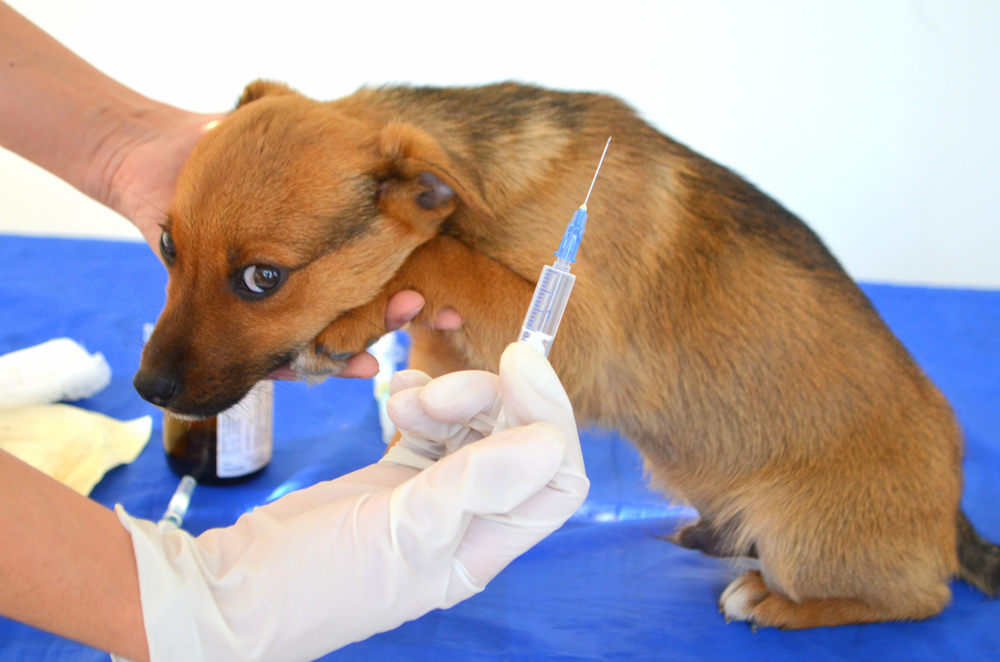
Canine distemper is a highly contagious viral disease that affects dogs worldwide. It is caused by the canine distemper virus (CDV), which belongs to the Morbillivirus genus. Distemper primarily targets the respiratory, gastrointestinal, and nervous systems of infected dogs, leading to a wide range of symptoms and potentially fatal outcomes if not promptly treated. This article aims to provide a comprehensive overview of distemper in dogs, covering symptoms, treatment options, prevention strategies, and frequently asked questions to help dog owners better understand and manage this disease.
Symptoms of Canine Distemper
Canine distemper can manifest differently in each dog, depending on various factors such as age, vaccination status, and overall health. The virus typically spreads through airborne exposure to respiratory secretions or through contact with infected bodily fluids. The incubation period ranges from 3 to 6 days after exposure, during which the virus replicates and spreads within the dog’s body.
Common symptoms of canine distemper include:
- Respiratory Signs:
- Coughing
- Nasal discharge (often thick and yellowish)
- Sneezing
- Difficulty breathing
- GastrointestinalSigns:
- Diarrhea (may be bloody)
- Vomiting
- Loss of appetite
- NeurologicalSigns:
- Muscle twitches
- Seizures
- Weakness or paralysis (especially in the hind limbs)
- Head tilt
- Behavioral changes (aggression, confusion)
- Ocular Signs:
- Eye discharge
- Redness and inflammation
As the disease progresses, dogs may develop secondary bacterial infections due to a weakened immune system. Puppies and unvaccinated dogs are particularly vulnerable and may experience more severe symptoms compared to adult dogs.

Diagnosis and Treatment
Early diagnosis of canine distemper is crucial for effective treatment. Veterinarians typically perform a physical examination and may conduct laboratory tests, including blood tests and PCR (polymerase chain reaction) tests to detect the virus.
There is no specific antiviral treatment for distemper, so supportive care is essential to manage symptoms and prevent secondary infections. Treatment options may include:
- Fluid therapy: To prevent dehydration due to vomiting and diarrhea.
- Nutritional support: Especially important if the dog is not eating.
- Medications: Such as antibiotics to treat secondary bacterial infections and anticonvulsants for seizures.
- Isolation: Infected dogs should be isolated to prevent spreading the virus to other dogs.
Supportive care aims to strengthen the dog’s immune system and manage symptoms until the virus runs its course. Some dogs may recover fully with intensive care, while others may experience permanent neurological damage even after recovery.
Prevention of Canine Distemper
Prevention is key in managing canine distemper, and vaccination is the most effective method. Puppies should receive a series of vaccinations starting at around 6-8 weeks of age, with boosters administered every year and the dog’s risk of exposure.
Other preventive measures include:
- Avoiding contact with infected dogs: Especially in areas where distemper outbreaks are known to occur.
- Quarantine new or sick dogs: Until their health status is confirmed.
- Maintaining good hygiene: Regularly clean and disinfect food and water bowls, bedding, and toys.
It’s essential for dog owners to work closely with their veterinarians to develop a vaccination schedule and preventive care plan tailored to their dog’s specific needs and risk factors.
Frequently Asked Questions about Canine Distemper
Q: Can dogs of any age get distemper?
A: Yes, dogs of all ages can contract distemper, but puppies younger than 4 months and unvaccinated dogs are at higher risk.
Q: Can distemper be transmitted to humans or other pets?
A: No, canine distemper is species-specific and cannot be transmitted to humans or cats.
Q: How long does the distemper virus survive in the environment?
A: The virus can survive for several hours to days in the environment, depending on factors such as temperature and humidity.
Q: Is there a cure for distemper?
A: There is no cure for distemper, but supportive care can help manage symptoms and improve the dog’s chances of recovery.
Q: Can a vaccinated dog still get distemper?
A: While rare, vaccinated dogs can still contract distemper if they are exposed to a high viral load or if their immune response to the vaccine is inadequate.
Q: What should I do if I suspect my dog has distemper?
A: Contact your veterinarian immediately. Early diagnosis and supportive care can significantly improve the dog’s prognosis.
Q: How can I protect my dog from distemper?
A: Ensure your dog is up-to-date on vaccinations, avoid contact with infected dogs, and practice good hygiene and sanitation practices.
Conclusion
Canine distemper is a serious viral disease that poses significant health risks to dogs worldwide. Understanding its symptoms, treatment options, and preventive measures is crucial for dog owners to protect their pets from this potentially deadly illness. Vaccination remains the cornerstone of distemper prevention, emphasizing the importance of regular veterinary care and timely vaccinations starting from puppyhood. By staying informed and proactive, dog owners can help reduce the incidence of distemper and provide the best possible care for their furry companions.
Remember, if you suspect your dog may have distemper or have questions about vaccination schedules, always consult your veterinarian for personalized advice and guidance.
